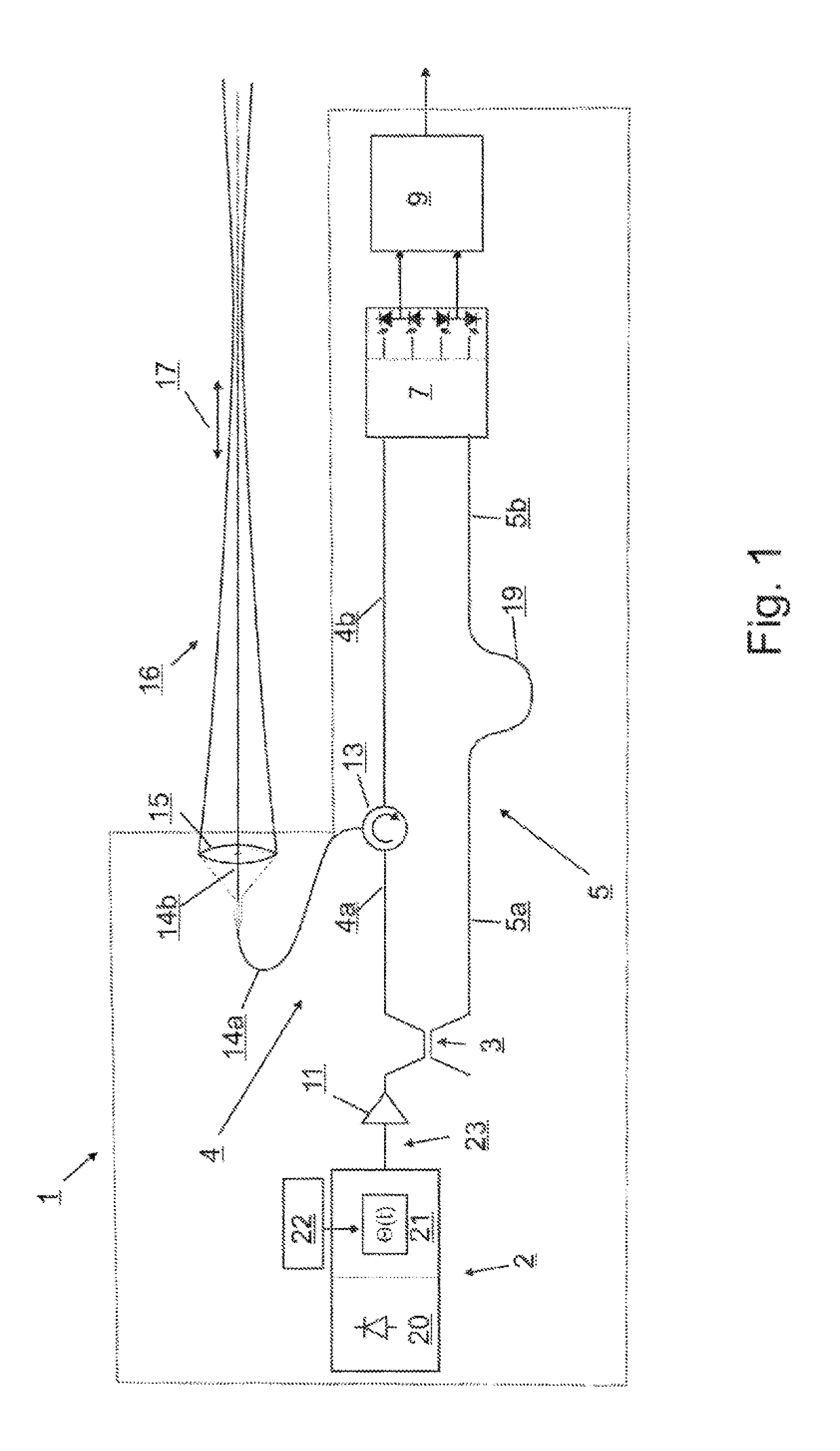Stray-light tolerant lidar measurement system and stray-light tolerant lidar measurement method
a technology of straylight and lidar, which is applied in the direction of measurement devices, instruments, climate sustainability, etc., can solve the problems of unavoidable interference in the measurement system, inadequate numerical suppression procedure, and insufficient function, etc., and achieves simple design, easy to carry out, and determined quickly. flexible
- Summary
- Abstract
- Description
- Claims
- Application Information
AI Technical Summary
Benefits of technology
Problems solved by technology
Method used
Image
Examples
Embodiment Construction
[0061]The lidar measurement system schematically shown in FIG. 1 has a continuous-wave laser source (2) with an output power of 1 mW, for example, and a wavelength of 1530 nm, for example; the light of the lidar measurement system passes through an erbium fiber amplifier (11) having an output power of 1 W, for example, and is then split by a beam splitter (3) in the form of an asymmetrical fiber-optic coupler into a partially fiber-optically defined measuring branch (4) and a completely fiber-optically defined reference branch (5). The splitting by the coupler (3) takes place, for example, at a 1000:1 ratio; i.e., for example 0.1 percent of the output light intensity of the amplifier (11) is coupled into the reference branch. Alternatively, the fiber amplifier (11) may also be situated in the measuring branch (4), in which case the splitting ratio of the coupler (3) may be 1:1, for example. The optical fibers used are preferably monomode fibers with low attenuation and a field radiu...
PUM
 Login to View More
Login to View More Abstract
Description
Claims
Application Information
 Login to View More
Login to View More - R&D
- Intellectual Property
- Life Sciences
- Materials
- Tech Scout
- Unparalleled Data Quality
- Higher Quality Content
- 60% Fewer Hallucinations
Browse by: Latest US Patents, China's latest patents, Technical Efficacy Thesaurus, Application Domain, Technology Topic, Popular Technical Reports.
© 2025 PatSnap. All rights reserved.Legal|Privacy policy|Modern Slavery Act Transparency Statement|Sitemap|About US| Contact US: help@patsnap.com


